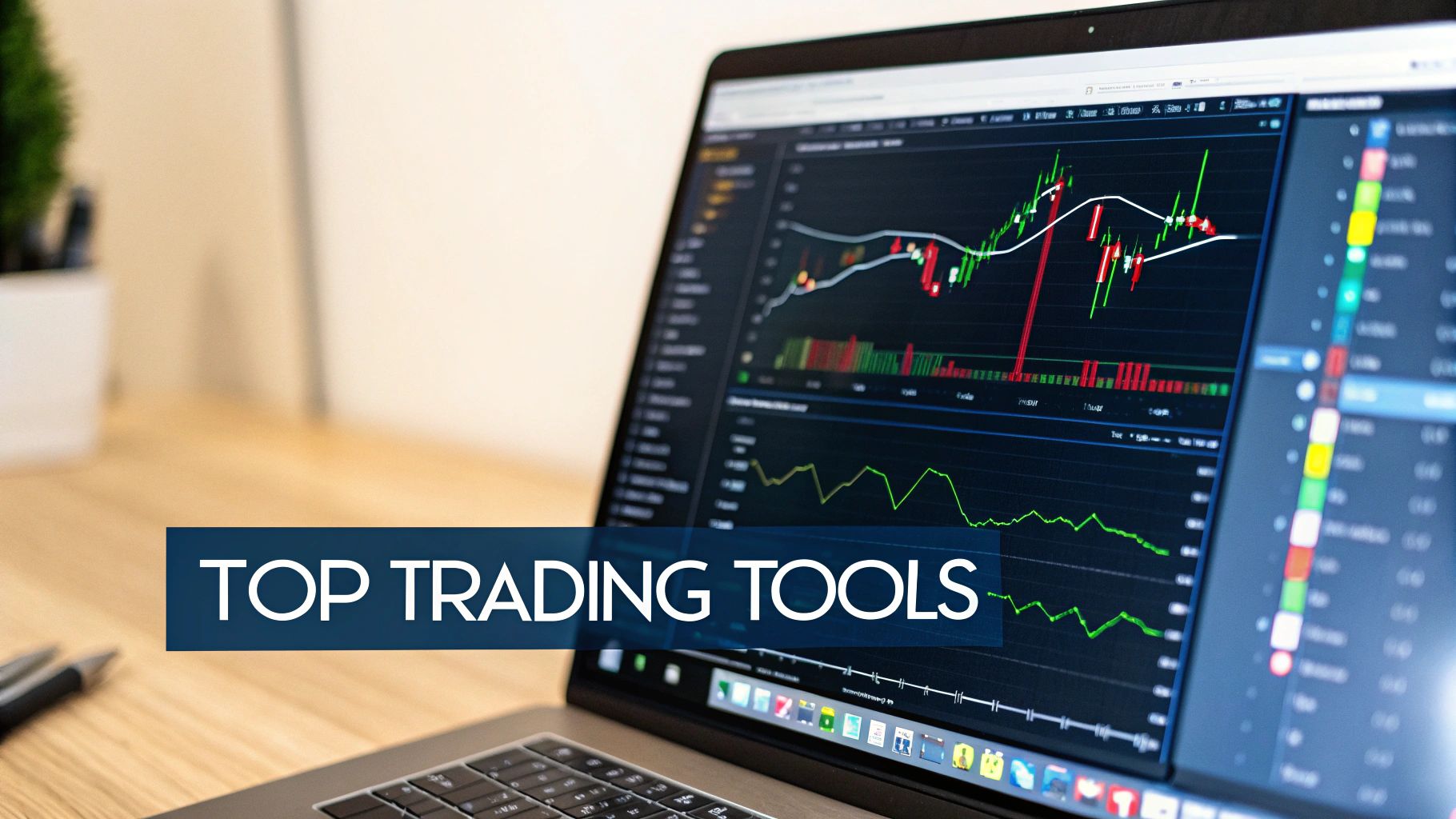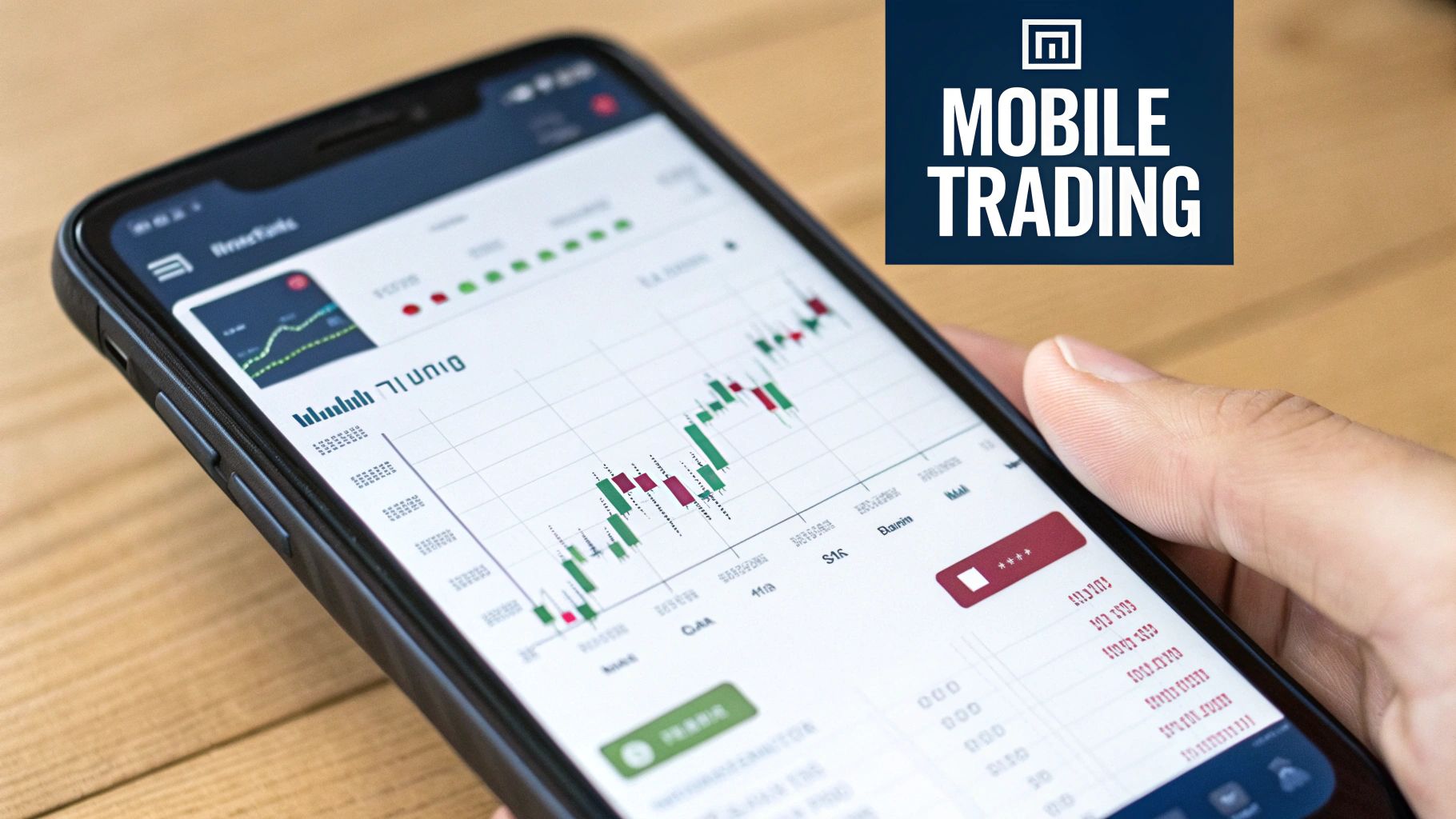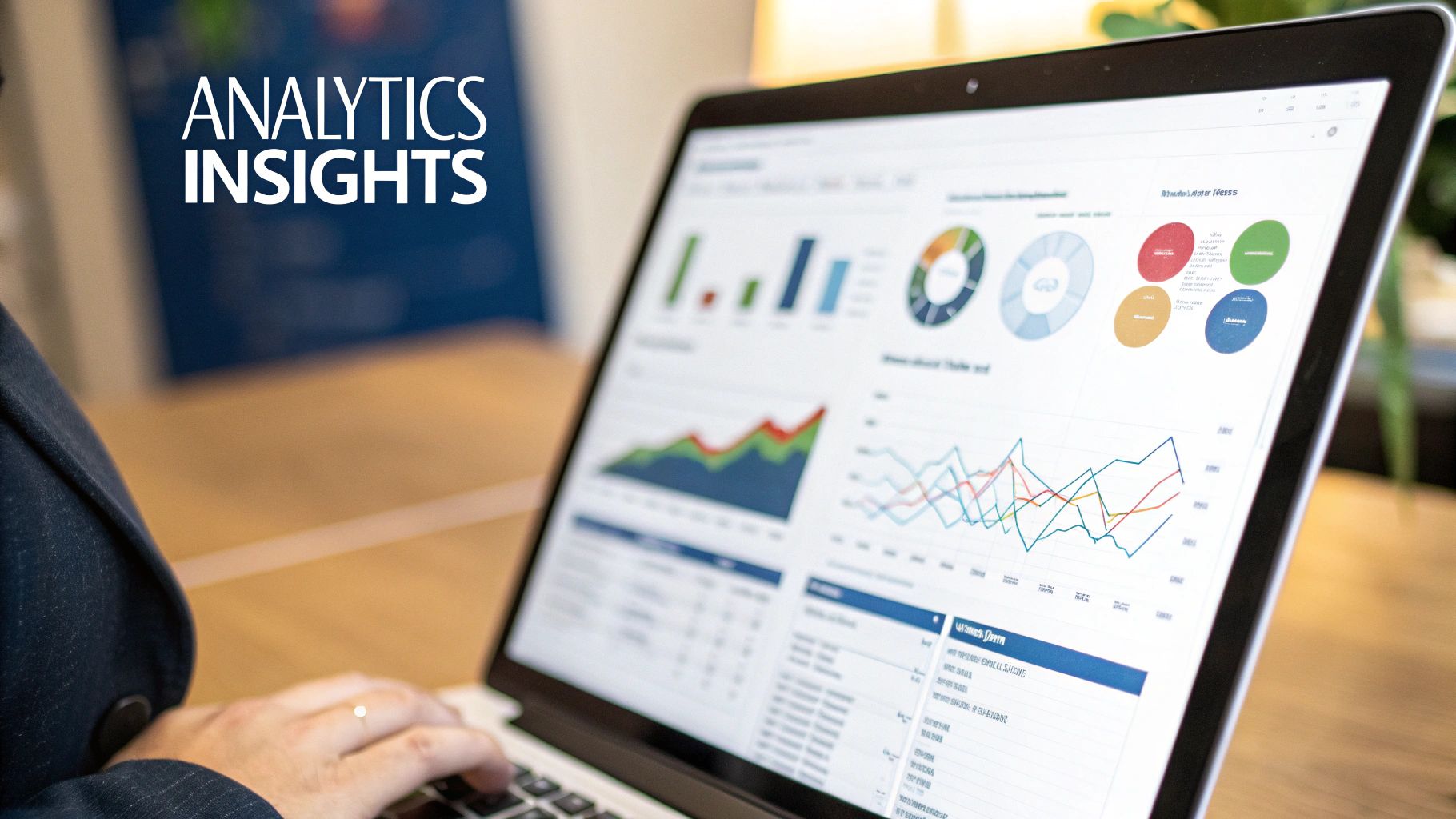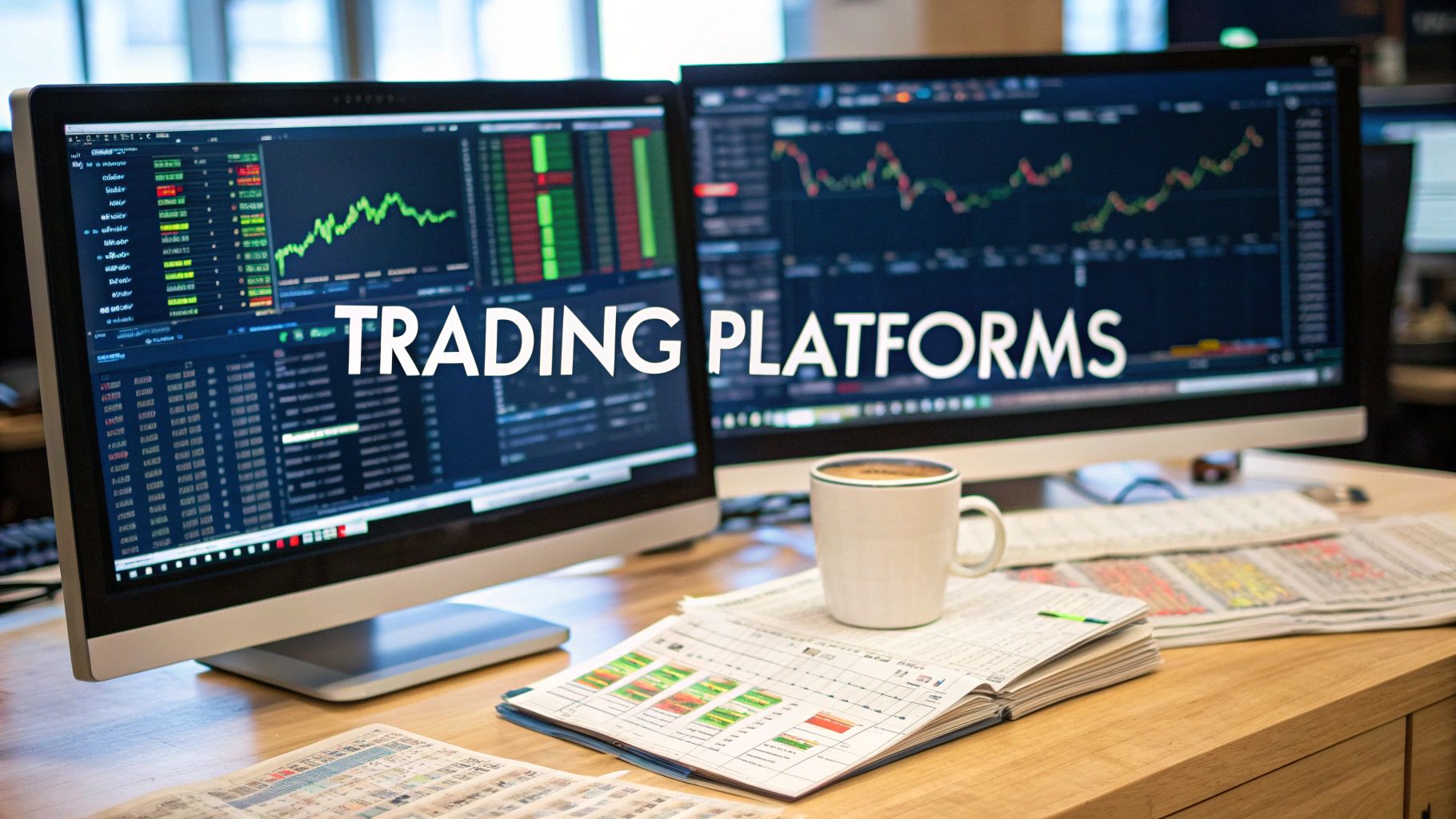Understanding Real Platform Costs Beyond the Marketing

When choosing an options trading platform, looking past flashy promotional rates and focusing on actual costs is essential. While many platforms advertise attractive headline fees, the real expenses often run much deeper. Let's break down the key factors that affect your total trading costs and how to evaluate them effectively.
Decoding the Fee Structures of Options Trading Platforms
The core of any platform's pricing is its basic fee structure. Take tastytrade, for example – they've simplified things with a straightforward $1 fee to open an options contract and $0 to close it, averaging $0.50 per side. This clear approach stands out compared to other platforms that use complex tiered pricing or per-share fees that can be hard to predict. But even with simple per-contract pricing, active traders need to watch how these fees add up over time.
Hidden Fees: Unveiling the True Cost
Beyond basic trading fees, platforms often tack on extra charges that aren't obvious at first glance. These can include fees for market data, platform access, account inactivity, and margin interest. Some platforms charge extra for real-time data or advanced charts, while others may penalize you if your balance drops too low. That's why it's so important to read through all the fine print in a platform's fee schedule before opening an account.
Comparing Real Costs Across Major Providers
To see how these costs play out in practice, let's look at a typical trader who makes 100 options trades weekly. On thinkorswim, where each contract costs $0.65 each way, they'd spend $130 weekly on commissions. Switch to tastytrade's $0.50 per-side pricing, and that drops to $100 weekly. Over a year, those savings really stack up:
| Platform | Cost Per Contract (Per Side) | Weekly Cost (100 Contracts) | Annual Cost |
|---|---|---|---|
| Platform A | $0.65 | $130 | $6,760 |
| tastytrade | $0.50 | $100 | $5,200 |
Developing a Framework for Calculating Your True Trading Expenses
The best way to evaluate platform costs is to create a simple framework based on your personal trading style. Consider how often you trade, what strategies you use, and which platform features you need. Remember that the cheapest per-contract fee isn't always best – you need to look at the total cost picture and how it fits your trading approach. This careful analysis will help you pick a platform that works for your budget while supporting your trading goals.
Navigating Platform Interfaces That Actually Work

When choosing an options trading platform, a clean and logical interface can make all the difference in your trading success. Even the most powerful analytical tools lose their value if you can't find them quickly or use them effectively. The best platforms strike a perfect balance between rich features and simple usability, making it easy to execute trades and manage your portfolio without getting lost in complex menus.
The Importance of Intuitive Design
Good platform design works like a well-organized kitchen – everything you need is right where you'd expect it to be. When you can quickly find and use essential tools without constantly checking help guides, you can focus on what really matters: analyzing the market and making smart trades. Clear layouts and logical navigation become especially important during busy market sessions when quick decisions can impact your returns.
Webull: A Case Study in User-Friendly Design
Webull stands out for making options trading more approachable, especially for newer traders. Its clean interface removes unnecessary clutter while keeping important features easily accessible. The platform's paper trading feature acts like a flight simulator, letting traders practice strategies without risking real money. Plus, the mobile app matches the desktop experience, so you can stay on top of your trades whether you're at your desk or on the move.
Customizing Your Workspace for Maximum Efficiency
Just as a chef arranges their kitchen to match their cooking style, successful traders customize their platform layout to support their strategy. This might mean positioning charts in a specific way, creating custom alert systems, or building specialized watchlists. A well-organized workspace helps you spot opportunities faster and react more efficiently to market moves.
Key Features to Look For
When evaluating a platform's interface, focus on these essential elements:
- Intuitive Order Entry: You should be able to place trades quickly and confidently
- Customizable Charts & Watchlists: The ability to arrange and customize your view to match your needs
- Real-time Data & Alerts: Quick access to current market data and custom notifications
- Mobile Accessibility: A full-featured mobile app that matches desktop capabilities
By choosing a platform with these user-friendly features, you'll be better equipped to navigate options trading successfully. The right interface removes unnecessary friction from your trading process, letting you concentrate on strategy and execution. This foundation of good design leads us to another crucial aspect of top options platforms: quality educational resources.
Finding Educational Resources That Transform Your Trading
Success in options trading requires more than just knowing how to place trades – you need a deep grasp of why certain strategies work and when to use them. The right educational resources can help bridge this knowledge gap. When evaluating options trading platforms, their educational offerings should be a key consideration, from basic tutorials to advanced strategy deep-dives.
Identifying Platforms With Valuable Educational Content
Quality educational content makes a real difference in your trading development. Look for platforms that offer structured learning paths rather than just surface-level overviews. Take tastytrade as an example – beyond their competitive $1 open/$0 close pricing, they provide extensive learning materials through live shows, recorded webinars, and on-demand videos. This helps traders build knowledge systematically, from basic put and call options to more complex strategies like iron condors and calendar spreads.
Assessing Educational Tools for Your Learning Style
Everyone learns differently when it comes to trading. Some people do best with live trading rooms where they can ask questions, while others prefer going through videos and written guides at their own pace. The best platforms recognize this and provide varied learning formats. Many include interactive elements like quizzes and progress tracking so you can check your understanding and identify areas to work on. This personalized approach helps ensure the material sticks and translates into better trading decisions.
Evaluating the Impact of Educational Resources on Trading Performance
The true test of any educational resource is whether it helps improve your actual trading results. This shows up in concrete ways – more consistent profits, better risk management, and fewer costly mistakes. Many platforms share case studies and testimonials showing how traders used specific strategies from their educational materials to place profitable trades. This practical focus on real results sets the best platforms apart from those just teaching theory.
Exploring Community Resources and Support Systems
Good educational materials are important, but learning from other traders can be just as valuable. Leading platforms build active communities through forums, chat rooms and social groups where traders share ideas and experiences. These spaces are especially helpful for newer traders who can learn from those who've been through similar challenges. For instance, if you're stuck on implementing a particular strategy, getting advice from experienced traders in the platform's community can help you overcome obstacles faster and avoid common pitfalls.
Advanced Analytics Tools for Options Trading

Once you've mastered the basics of options platforms and educational resources, diving into professional analytics tools opens up new possibilities for your trading. These tools help you see beyond surface-level price movements to understand the key factors driving market behavior. Let's explore how platforms like thinkorswim equip traders with data-driven insights for smarter options trading decisions.
The Essential Role of Market Analytics
Trading options without proper analytical tools is like trying to find your way through an unfamiliar city without a map. You might eventually get where you want to go, but you'll waste time and likely make costly wrong turns along the way. Good analytics serve as your market GPS, revealing critical patterns in price action, volatility trends, and other key metrics that shape trading opportunities.
Key Analytics Features in Thinkorswim
Thinkorswim, now part of Charles Schwab, stands out for its robust analytical capabilities. For instance, traders can access real-time Level II data showing detailed order flow information that many other platforms don't provide. The platform also lets you create custom filters for options flow analysis, making it easier to spot unusual market activity that could signal trading opportunities.
Analytics Across Different Trading Platforms
While thinkorswim sets a high standard, other options trading platforms offer their own unique analytical strengths. Some excel at detailed options chain analysis, while others focus on volatility modeling tools. Your choice of platform should match your specific trading approach. Day traders might prefer platforms with real-time options flow data, while longer-term investors may need platforms offering extensive historical data for backtesting strategies.
Putting Analytics to Work in Real Trading
Here's a real-world example of analytics in action: Picture a trader spotting unusually high volume in call options for a specific stock. Using thinkorswim's analysis tools, they can examine open interest levels, implied volatility readings, and other key data points. This deeper look might reveal that traders are positioning themselves ahead of an upcoming earnings announcement. With this complete picture, the trader can make better-informed decisions about entering or avoiding positions.
Creating Your Analysis System
Just as every trader learns differently, your approach to market analysis should fit your personal trading style. This could mean building custom technical indicators, setting specific price alerts, or developing your own method for evaluating options chains. The goal is to use these analytical tools in ways that give you clear insights into market opportunities. This foundation in market analysis naturally leads us to our next topic: how to confidently trade options across global markets.
Accessing Global Markets With Confidence
Once you've mastered market analysis basics, exploring global markets is a natural next step. While many traders stick to their local exchanges, venturing into international markets can open up exciting new possibilities. By looking beyond domestic borders, you can find unique opportunities and build a more diverse investment portfolio.
Expanding Your Horizons: Why Trade Internationally?
Trading across international exchanges gives you access to a much wider range of investment options. For instance, you might discover fast-growing companies in emerging markets or invest in successful foreign businesses that aren't listed on your local exchange. This broader approach helps protect your investments – when one region's market is down, another might be thriving. You can also take advantage of different economic cycles and market conditions around the world.
Evaluating Platforms for Global Trading
When choosing a platform for international trading, pay attention to these key features:
- Market Availability: Check which foreign exchanges you can access. Interactive Brokers stands out for offering extensive global market access.
- Currency Conversion: Look at how the platform handles different currencies and what fees they charge. These costs can significantly impact your returns.
- Trading Hours: Since markets operate in different time zones, make sure your platform clearly shows trading hours and lets you trade when markets are open.
- Research and Data: Good platforms provide market news, company information, and economic calendars for international markets to help inform your decisions.
Navigating the Challenges of International Trading
Trading internationally comes with several important considerations:
- Regulatory Differences: Trading rules vary by country. Make sure you understand local regulations to avoid compliance issues.
- Political and Economic Risks: World events can quickly affect market prices. Stay informed about global news and economic trends to manage these risks effectively.
- Currency Fluctuations: Changes in exchange rates can affect your profits. Having a clear plan for managing currency risk is essential.
Managing Cross-Border Positions
Success in international markets requires careful planning and execution:
- Time Zone Differences: Plan your trading schedule around market hours in different regions.
- Currency Risk: Consider using currency hedging or specific options strategies to protect against exchange rate changes.
- Tax Implications: Work with a tax professional to understand how international trading affects your tax situation.
By understanding both the benefits and challenges of trading globally, and choosing a platform with the right tools, you can confidently expand your trading into international markets. This broader perspective helps you make better decisions about which trading platform matches your goals and trading style.
Making Your Platform Decision: A Practical Framework

Choosing the right options trading platform can make a huge difference in your trading success. Each platform has its own strengths, so finding one that matches your specific needs is essential. Let's walk through a clear process to help you evaluate and select the best platform for your trading style, based on real experiences from active traders.
Defining Your Trading Profile and Objectives
Start by getting clear on who you are as a trader. How often do you plan to trade? What strategies will you use? Your trading style directly impacts which platform features matter most. For instance, if you're an active day trader, you'll need lightning-fast execution and real-time data. But if you're more focused on longer-term strategies, you might care more about research tools and lower fees. Taking time to understand your needs helps narrow down which platforms deserve a closer look.
Weighing Platform Features Against Your Goals
After defining your needs, examine how each platform's features line up with your goals. Here are the key areas to evaluate:
- Commission Structure: Fee structures vary widely between platforms. Tastytrade charges $1 to open and $0 to close trades, while other platforms use different models. For active traders especially, these differences can seriously impact your bottom line.
- Analytical Tools: Different platforms excel at different types of analysis. Thinkorswim offers deep technical analysis capabilities, while other platforms might focus more on fundamental data or options-specific tools.
- Educational Resources: Some platforms, like Tastytrade, put huge emphasis on trader education with videos, articles and live content. Others offer basic resources or expect you to learn elsewhere. This matters a lot if you're still building your trading knowledge.
- User Interface: A clean, logical interface helps you trade efficiently. Webull is known for making complex options trading more approachable through smart design choices.
- Global Market Access: If you want to trade international markets, platforms like Interactive Brokers give you access to exchanges worldwide.
Developing a Decision Matrix
To make comparing platforms easier, create a simple scoring matrix. List out the features that matter most to you and rate each platform from 1-5. This gives you a clear visual way to see which platform best fits your needs. Here's an example:
| Feature | Platform A | Platform B | Platform C |
|---|---|---|---|
| Commission Costs | 3 | 5 | 4 |
| Analytical Tools | 4 | 3 | 5 |
| Educational Resources | 2 | 4 | 3 |
| User Interface | 5 | 4 | 3 |
This systematic approach helps you make an objective choice based on what actually matters for your trading. Remember – the best platform isn't necessarily the one with the most features, but the one that gives you the specific tools you need to trade effectively.
For investors focused on generating income through covered calls and cash-secured puts, check out Coverd. This platform specializes in helping long-term investors find solid options selling opportunities, turning complex research into clear recommendations in seconds.

Leave a Reply